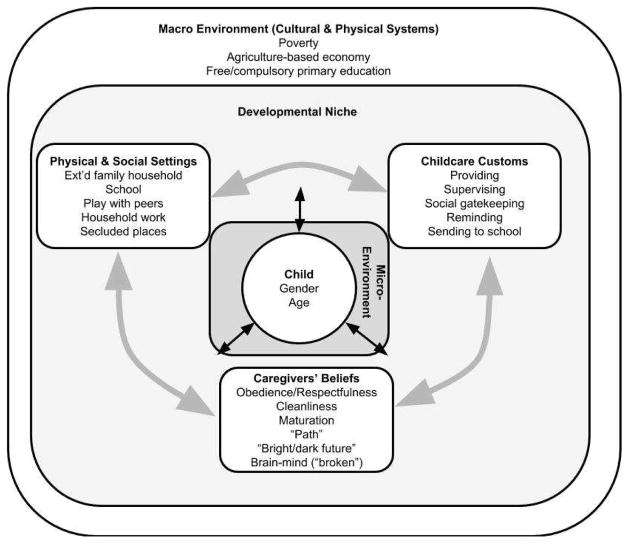Figure 1.
Developmental Niche Framework and Key Findings
Source: Based on concepts from Super and Harkness (1986) as illustrated in Worthman (2010b), adapted to include findings from the present study in Nepal.
Note: The figure illustrates the nesting of the child in a micro-environment shaped by the interacting subsystems of the developmental niche (i.e. settings, customs, and beliefs). The developmental niche, in turn, is embedded within the larger macro-environment, characterized by cultural and physical systems. Within the “child” circle, “gender” and “age” indicate “second-order effects” that shape the child’s experience within the developmental niche. Behavior (including more and less problematic behavior) develops through the interactions of the child within the developmental niche over time.

